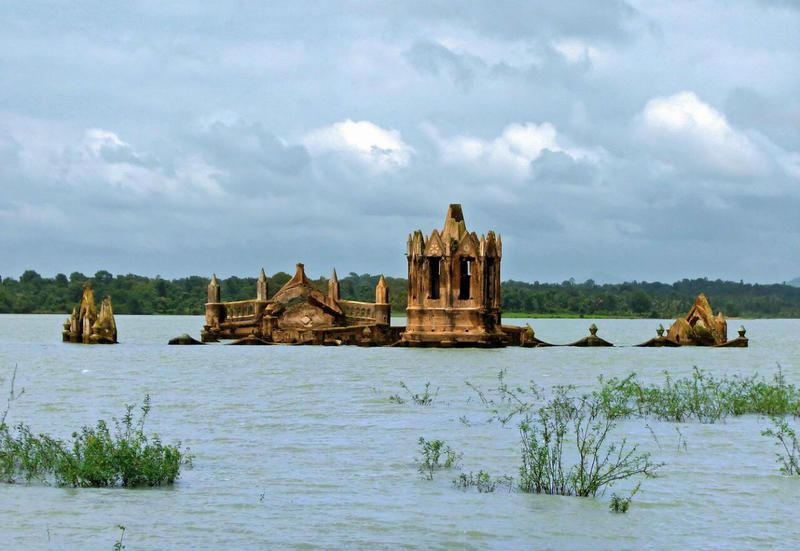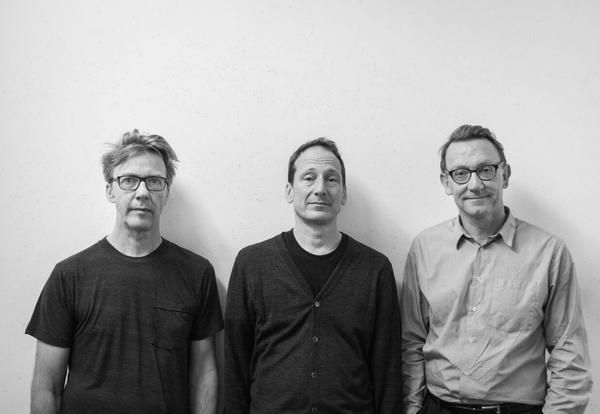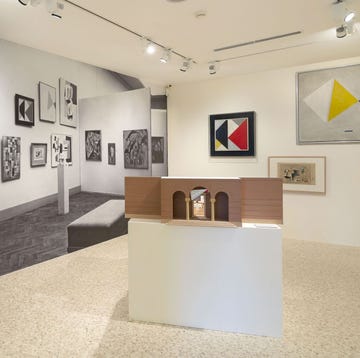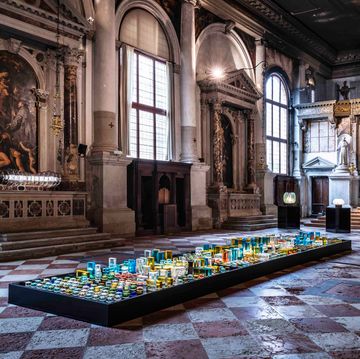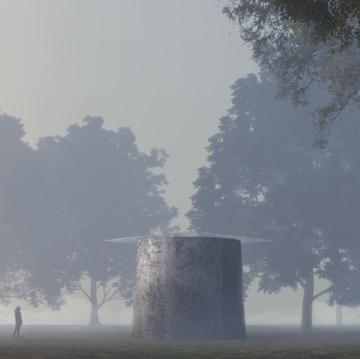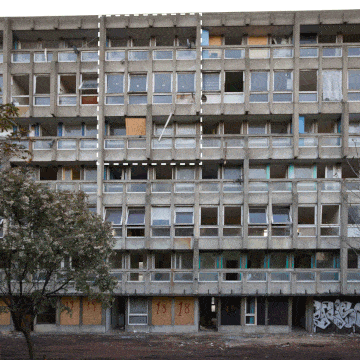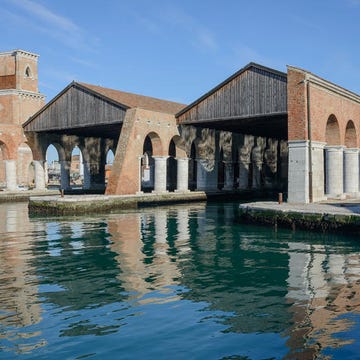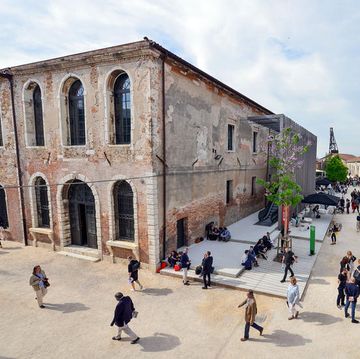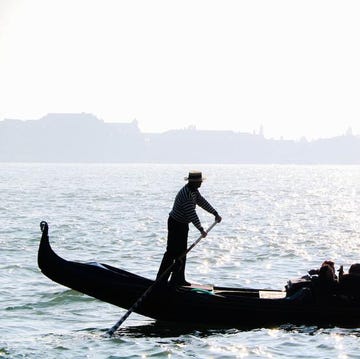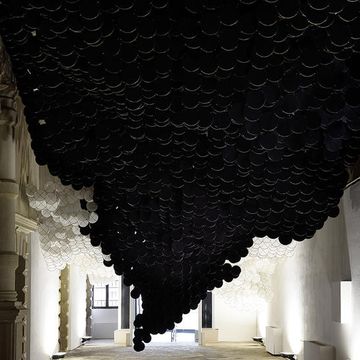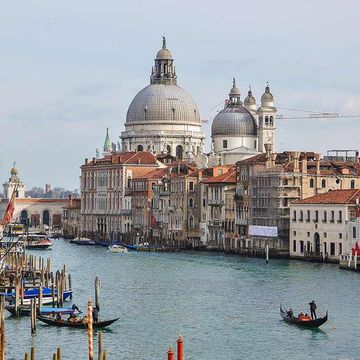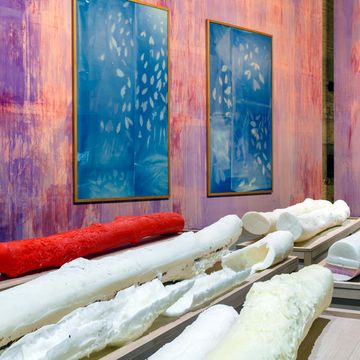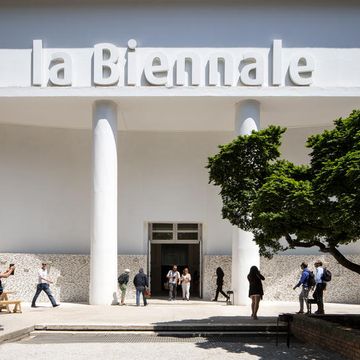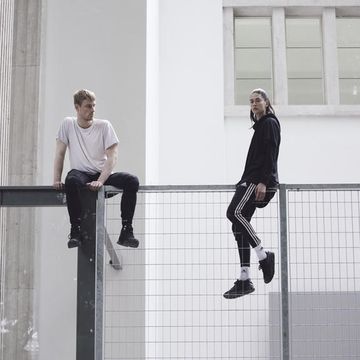Island by Caruso St John Architects in collaboration with artist Marcus Taylor has been chosen by the British Council to show in the British Pavilion at the next Venice Biennale of Architecture.
The project is set to respond to the overarching theme of this year’s event, Freespace, by Yvonne Farrell and Shelley McNamara of Grafton Architects.
With a new public space to be built atop the British Pavilion, designers hope to create a raised square, offering visitors a new meeting place and unique point of view over the lagoon.
At the center of the British Pavilion for the 2018 Biennale of Architecture, a tower rises from the pavement to suggest an island sitting over a submerged world. Entertaining guests, the pavilion’s calendar is full of events that include poetry, performances, films, and debates.
It’s the very same Adam Caruso, Peter St John, and Marcus Taylor that tell us about the many ways of interpreting the British Pavilion at the 2018 Biennale.
An island can be lived both as a place of refuge or of exile. The Pavilion will be completely covered with scaffolding to support the new overhead platform that touches on the many possible interpretations: abandonment, reconstruction, sanctuary, Brexit, isolation, colonialism, and even climate change.
Sarah Mann, director of Architecture Design Fashion at the British Council and Commissioner for the 2018 British Pavilion tells us the Island will offer a stimulating experience within the 2018 Biennale, continuing its tradition as a platform for debate and an exchange of ideas and opinions.
This marks the first year that the Commission has approved a project at the intersection of art and architecture to present not only an exhibit, but an experience without interruption.
Since 1937, it is the British Council’s responsibility to select and highlight the best architects, artists, and designers from the United Kingdom at the British Pavilion in Venice.
It was no exception this year, as Studio John Morgan stepped in to create the graphic identity for Island. His accompanying book, published by The Store X The Spaces, together with a program of events and the Fellowship of Venice, plays a crucial role in the British Pavilion’s platform for discussion on contemporary art and architecture.
We spoke directly with Adam Caruso, Peter St John, Marcus Taylor, and the curating team to find out what was key concept behind the projects title, Island?
The title is a reference to a lot of things, but especially to The Tempest by Shakespeare, whose protagonists are abandoned at sea before making their way to an unknown paradise island. It’s about being saved and lost at the same time. Island also reflects on Venice and its weary relationship with the sea. Then there’s naturally the connection to Brexit and the current renegotiations, among the lingering questions and doubts. Finally, it also represents the physical space we’re creating on the roof of the Pavilion, which is a kind of raft with a sense of independence and unique views over the lagoon.
The British Pavilion is in a certain sense, disconnected. It’s located on a raised position on a little hill, which is already the highest natural point in Venice. The design will also look to exploit this.
There was an intentional desire to transform the structure into a generous public space. Why is that?
In the past, the Pavilion has always shown exhibits on architectural themes. This time around we took a different approach to signal a clear change. There will be no exhibits, but rather a construction that can be lived like a building. The public nature is obviously very important because it lets us wander, meet people, and participate - or not. A program of events with various spectacles has also been organized, but the important aspect is to see how the space will be used by the public.
When the key concept of the Pavilion was explained, there were references to colonialism, Brexit, isolation, and reconstruction. How will these themes play into the concrete project?
The project has different dimensions: the construction of spaces that can visited, the discussions and exhibits that will take place, the publications and images that will emerge. The themes mentioned will all be communicated through these various channels. We hope that those who can’t visit in person but will see it through the media discuss the ideas as well.
What is the significance of The Tempest by Shakespeare and of the young British artist, Kate Tempest?
There are aspects of sadness, contemplation, and even desperation in the themes of the project, but also poetry and celebration. The Pavilion will be a place to meet where anything can happen. We hope it becomes a place where old meets new and local meets national and international. There will be an interpretation of the Tempesta on the panoramic platform and Kate Tempest will also perform there.
